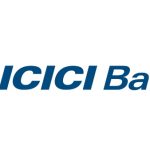The Unified Payments Interface (UPI) has emerged as the most popular digital payment option in the last few years. From local kirana stores to restaurants to shopping malls or movie theatres, QR code is everywhere. All you need to do is to scan a QR code with your mobile phone and pay. Traditionally, the most preferred method of UPI transactions is linking a bank account in any UPI-enabled app for transactions, according to the National Payments Corporation of India (NPCI). However, prepaid instruments (PPIs) or mobile wallets have also become quite popular among users in recent years, thanks to interoperable QR codes and hassle-free quick transactions.
The Reserve Bank of India (RBI) has mandated all prepaid payment instruments (PPIs) such as wallets to be interoperable with UPI by March 31, 2022.
To begin with, the concept of mobile wallets is similar to physical wallets. You need to put some money in your mobile wallet through top-up. Unlike a bank account-linked transaction when you pay from your wallet, the money will be deducted from your wallet, not directly from your bank account. At present, popular payment applications including Paytm, PhonePe, and Amazon Pay offer their wallets. In 2022, NPCI launched UPI Lite which is an ‘on-device’ wallet.
Thanks to interoperability, to pay from your wallet, you do not need to have the same payment application that the merchant or store, or receiver has. An interoperable QR code makes it easier for you to make payments, no matter whether it is bank account, prepaid wallet or any other application you are using.
Difference between UPI and UPI wallet
UPI has become the go-to payment solution for millions of Indians in the last few years. You must be using UPI for a lot of small-value transactions on a daily basis. Every time you use the traditional bank-to-bank UPI transfer, you enter the UPI PIN of your primary savings account. Do remember that all these transactions will also get reflected in your bank account statements. However, if the volume of these small transactions is high, your bank statement may get so cluttered that it will become a challenge to use it in a meaningful way when the need arises.
Moreover, there are other things you need to keep in mind. Using your main savings bank account for low-value transactions of Rs 10 or Rs 20, will expose it to more risks, said experts. “UPI QR code interoperability can make transactions safer in the sense that you don’t have to use your bank account for every transaction, which reduces the risk of exposing your primary savings account to fraud and scams. Instead, you can use a prepaid wallet,” said Bipin Preet Singh, Co-Founder & CEO, MobiKwik.
“Additionally, UPI wallets also have advanced security features such as device binding, which ensures that the UPI account can only be accessed from a specific device,” said Ashwin Chawwla, Founder & MD, of Escrowpay.
As more and more people are relying on UPI for all kinds of transactions, at times you notice server failures during bank-to-bank transfers. “UPI wallets offer the convenience of having the funds readily available for making payments without having to transfer money from a bank account each time,” said Chawwla.
Moreover, you also have the option to recharge your wallet with credit cards. There could be times when you do not have sufficient balance in your bank account and you will have to use your credit card for a purchase. Suppose the store does not have a POS machine and your only option is scanning the QR code and paying through UPI. Here, you can easily load your wallet from your credit card and make the payment. “A prepaid wallet that can be loaded via multiple payment methods, such as credit cards or bank accounts via UPI, providing more flexibility and convenience in making payments,” said Singh… Read More
Source By: economictimes
Share:












